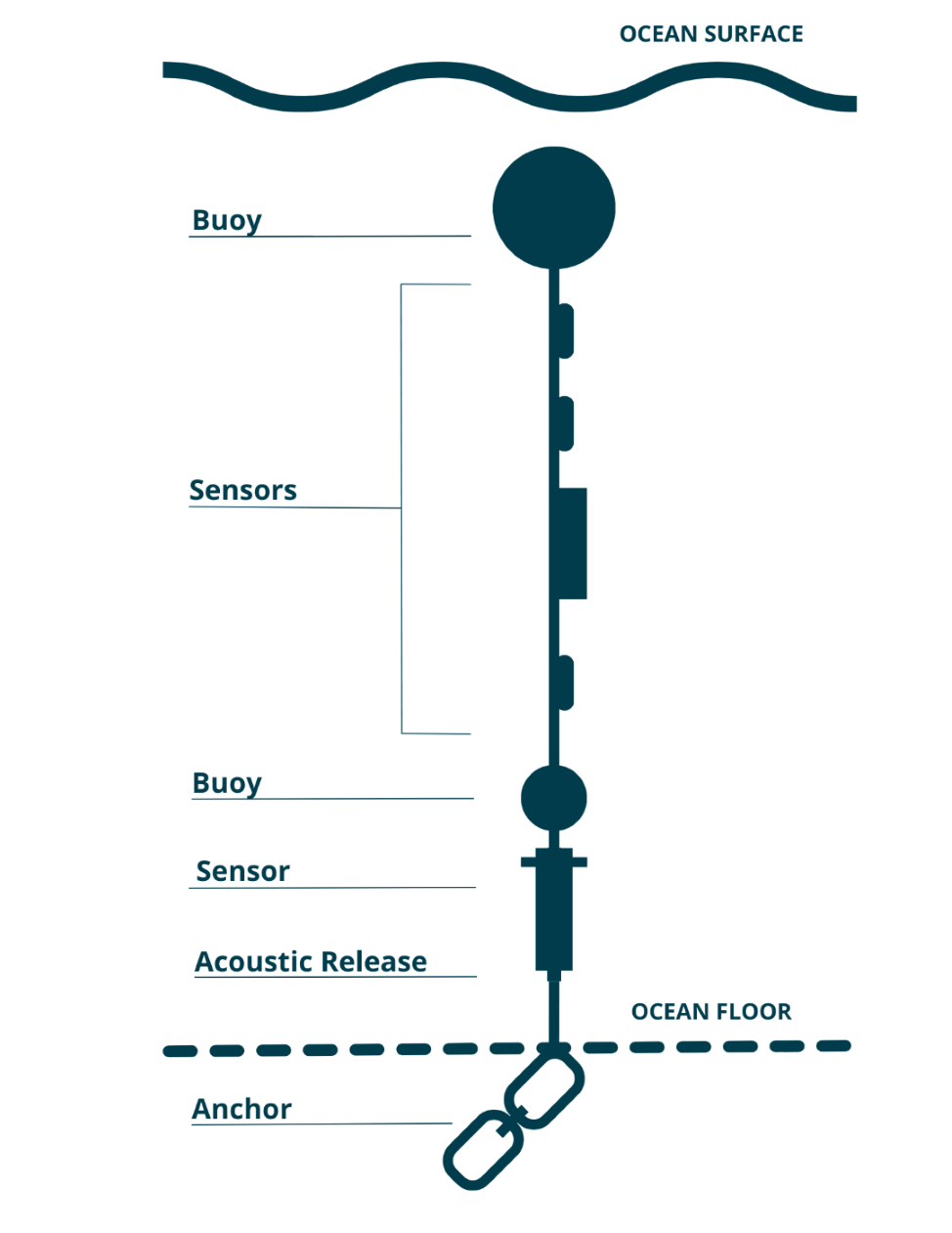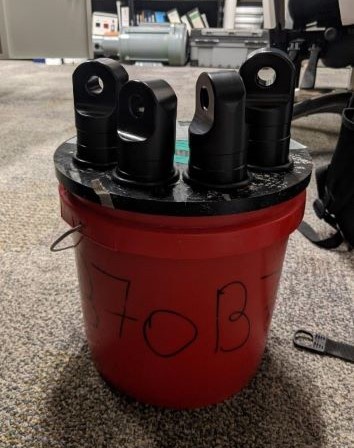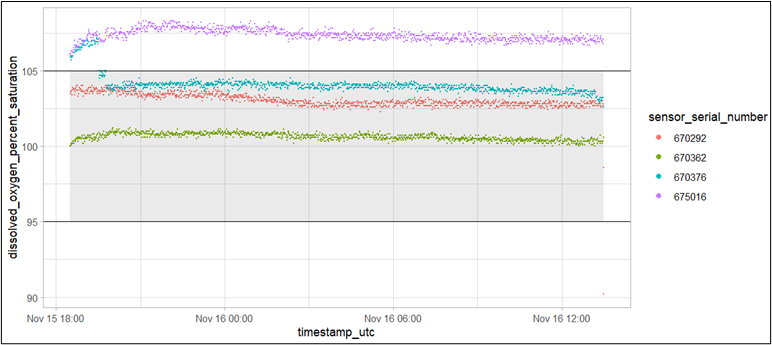
Water Quality Data
CMAR collects high resolution temperature, dissolved oxygen, and salinity data through the Water Quality branch of the Coastal Monitoring Program.
Data Collection
Water Quality data is collected using moorings referred to as “sensor strings”. A typical sensor string configuration consists of a rope attached to the seafloor by an anchor and suspended by a sub-surface buoy, with sensors attached at various depths (Figure 1). Most strings deployed since 2018 are attached to the anchor by an acoustic receiver with a release mechanism. The receiver also logs detections of tagged animals including great white sharks, sturgeon, and tuna for the Ocean Tracking Network.
Characteristics of the station location1 and stakeholder needs dictate the string design2. Sensor strings are generally deployed 200 m to 1000 m from shore, in depths up to 75 m. Historically, strings were deployed with only temperature sensors, but in more recent years at least one dissolved oxygen sensor is included (typically at 5 m). At the request of industry, salinity sensors are also included at stations near proposed and existing shellfish aquaculture leases. Some of the sensors used to measure these variables also measure sensor depth. CMAR has also processed and published this opportunistic depth data.
The different sensor string configurations are described in the table below and (Figure 2):
| sub-surface buoy | Attached to sub-surface buoy. Typically has an acoustic release, but sometimes retrieved by diver or drag line. Does not float with tide. |
| surface buoy | Attached to surface buoy. Floats with tide. |
| attached to gear | Typically attached to aquaculture gear, but may be attached to another structure. Floats with tide. |
| attached to fixed structure | Attached to wharf, bridge, or pole. Does not float with tide. |
| floating dock | Attached to a floating dock. Floats with tide. |
| unknown | Configuration not indicated in deployment log. |

Sensor Calibration & Validation
Pre-Deployment Validation
Prior to deployment, sensors that can be calibrated are calibrated according to their specific sensor manual. All sensors are then subjected to a Validation Test(s), which differ depending on the variables measured.
Dissolved Oxygen (percent saturation)
For a Validation Test of dissolved oxygen measured in units of percent saturation, sensors are set to record at 15 minute intervals and placed in an air-tight environment with water-saturated air at 100 % humidity. The sensors are left to record for at least 6 hours (Figure 3).

The precision for these dissolved oxygen sensors is +/-5 % (InnovaSea 2021). Since the the sensors in the bucket are in water-saturated air, they should measure 100 +/-5 % saturation. Any sensors outside of the acceptable 95 - 105 % range for more than 10 % of the test are re-calibrated and re-validated. A sensor that fails 2 consecutive validation tests is sent to the manufacturer for maintenance.

Figure 4 shows the results of a dissolved oxygen Validation Test for four sensors. Sensor #675016 recorded outside of an acceptable range for 99.9% of the test period, and was therefore flagged for re-calibration.
Other Variables
For Validation Tests of the other variables, sensors are set to record at 10 - 15 minute intervals and submerged in a well insulated container of water for at least 6 hours. Seawater is used for tests with salinity sensors.
After the recording period, data from all sensors is offloaded. Each observation is compared to the median value of all sensors in the container. Sensors with > 10 % of measurements outside of the acceptable range indicated in the sensor manual are re-validated. A sensor that fails 2 consecutive validation tests is sent to the manufacturer for maintenance.

All code used to evaluate sensor validation test status are published in CMAR’s R package calval.
Post-Deployment Validation
Retrieved sensors undergo a post-deployment validation test, which follows the same procedures as the pre-deployment validation test. The post-deployment tests identify sensors that drifted, were impacted by biofouling, or were damaged.
Data Access
Coastal Monitoring Program Water Quality Data can be accessed from several platforms. Summary reports are available on the CMAR Website. Full datasets can be downloaded from the Nova Scotia Open Data Portal and the CIOOS Atlantic.
The reports and datasets can also be accessed through the CMAR Station Locations Map.
